
Most of today’s best practices around lead generation inevitably end up focusing on the same thing:
Optimizing your lead capture forms, as well as the calls-to-action (CTAs) that point to them.
For a lot of marketing teams, generating leads via the company blog means sending blog visitors to a landing page where they can download gated content.
That’s been the playbook for a decade.
But here’s why that playbook no longer works:
Today, 81% of tech buyers who come across gated content don’t fill out the form. So they often end up going elsewhere for that information.
Just imagine if I ended this blog post right here and said, “Alright, want to learn more? Go to this page and enter your name and email and phone number and company name and company size and we’ll let you download this PDF document.”
☝ Would you actually do all that? Probably not. You’d probably end up going to another company’s blog for that information — potentially a competitor’s blog.
These days, the buyers have all the power. And that’s why we decided to build a new lead generation strategy for our blog. We needed to adapt to meet this new reality.
Here’s how it all went down (and how you can use the same approach on your blog).
The Evolution of Our Lead Generation Strategy
In the early days of Drift, we used gated content to generate leads just like everybody else.
Then, one day, out-of-the-blue, our head of marketing Dave Gerhardt got the call.
It was David Cancel, Drift co-founder and CEO, and he had a simple (but bone-chilling) message for Dave:
“We’re throwing out all of our lead forms and making content free.”
(see our piece on How to Generate Leads Online)
As the person in charge of the marketing team — the team responsible for generating qualified leads for Sales — Dave had his work cut out for him. Because all of sudden, the old playbook was off the table.
That’s how the #NoForms movement got its start.
Flash forward to more than a year later without gated content, and it’s become clear that forms are no longer necessary for lead generation.
Thousands of companies have now discovered the power of conversational marketing, which replaces forms and follow-ups with real-time, one-to-one conversations.
A few months back, we looked at the effect replacing forms with conversations was having on our sales process. Here’s what we found.
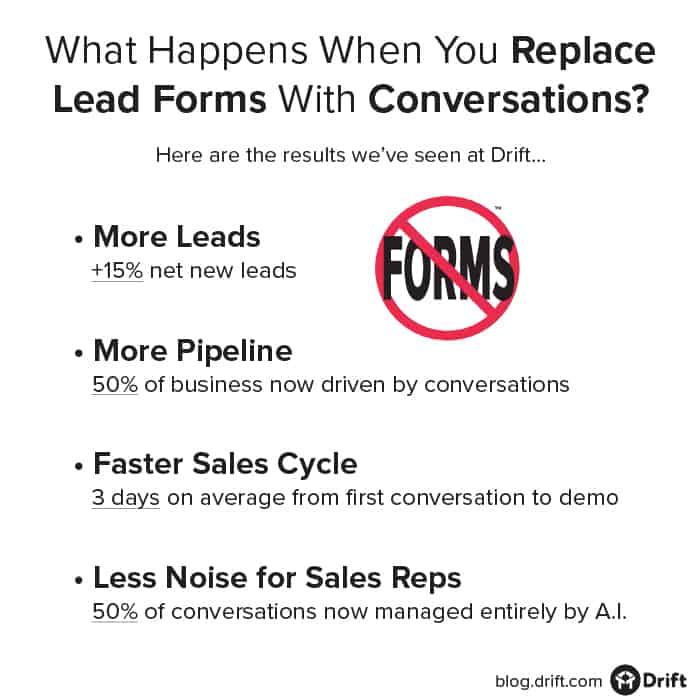
Keep reading for a closer look at how we use conversations to engage with visitors on the Drift blog.
Capturing and Qualifying Blog Leads: The “Three Visit” Rule
One of the most common concerns we hear from marketers and salespeople when it comes to adopting a conversational approach is this:
How the heck do you filter out all the random visitors who are never going to become customers?
As we’ve been growing our blog traffic, that’s an issue we’ve been dealing with a lot ourselves.
Because at the end of the day, not every person who reads our blog is going to be a good fit to talk to a salesperson, and we definitely don’t want to waste our sales team’s time.
Here’s one of the solutions we’ve come up with:
We have a chatbot appear for just those blog visitors who’ve dropped by our blog at least three times. And the chatbot asks if those visitors would be interested in seeing a demo.
Here’s an example of what it looks like in Drift when that happens.
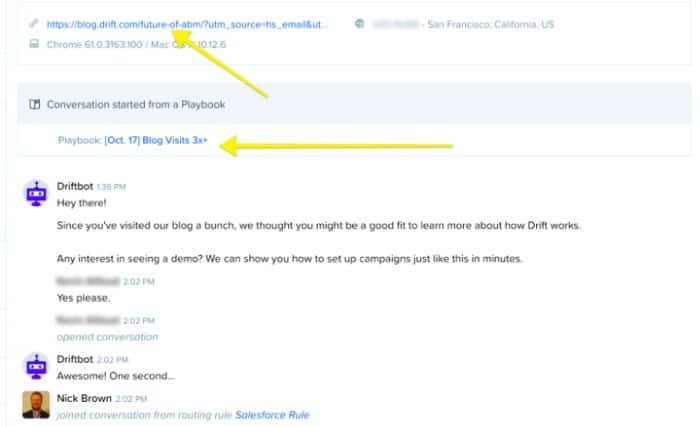
Note the blog post URL up at the top. That’s where the conversation is taking place. So you can see that this lead never had to leave the blog post and go to a landing page in order to book this demo.
Once that lead told our bot that they were interested in a demo, a few things happened in rapid succession:
- Our sales rep Nick, who owns that lead (based on our Salesforce routing rules), was automatically added to the conversation.
- The lead was immediately able to see open times on Nick’s calendar and choose the time that worked best for a demo.
- The lead was able to leave a note for Nick explaining what he wanted to focus on when they met.
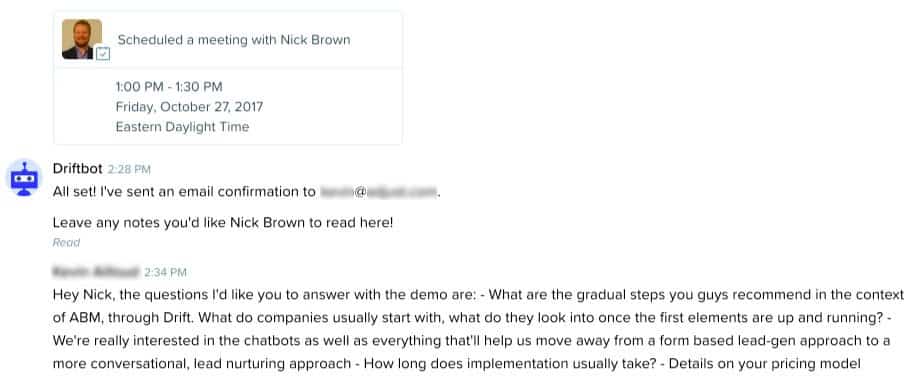
In the example above, we had just published a teaser post for our ABM product that we were launching the following week.
And because we had our three-visit rule in place, we were able to turn this person’s real-time interest in ABM into interest in our product.
Oh, right. And we closed them as a customer (Pro plan) a couple weeks later, right after we launched Drift ABM.
How We Did It, Step-By-Step
Step 1. Write relevant content.
There’s been a tendency in marketing to go broad with blog content — to cover every topic imaginable no matter how loosely connected it is to your product or company vision.
That’s because for a lot of marketing teams, hitting monthly traffic goals is still considered crucial. And one way to help make sure those goals get met is by appealing to a broader audience.
And that’s where things get tricky. Because once you start optimizing for the quantity of people visiting your blog, it’s easy to forget about the quality, and to overlook whether or not the people you’re attracting would actually be a good fit for your product.
On the Drift marketing team, we’ve started planning more and more of our content around our Marketable Moments. As our co-founder and CTO Elias explained in a recent post, our “Marketable Moment” is a promise we make to our customers that each and every month we’ll publicly release a new product.
Last month, our Marketable Moment was Drift ABM, so writing about the future of ABM on our blog the week before we launched was a no-brainer.
Step 2. Set up a Playbook on your blog that books demos 24/7.
At Drift, we know that having to configure chatbots and set targeting rules can be overwhelming, which is why we pre-package our bots in easy-to-use Playbooks.
In this case, we started by creating a new “Book a Qualified Meeting via LeadBot” Playbook from the Playbooks dashboard.
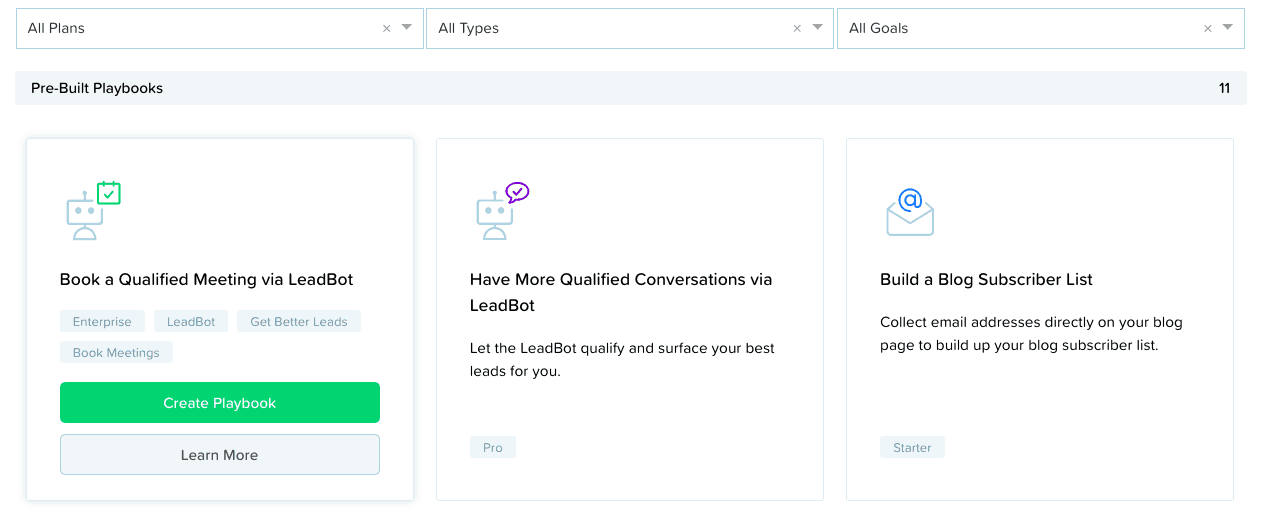
From there, we wrote a greeting for the bot, and we wrote the questions and follow-ups we wanted it to use during conversations.
We also set goals for our Playbook, which is how we control what happens to a lead after they interact with a bot. In this case, when someone says they’re interested in a demo, our “Blog Visit Demo” goal is met, and a sales rep is automatically assigned to them.
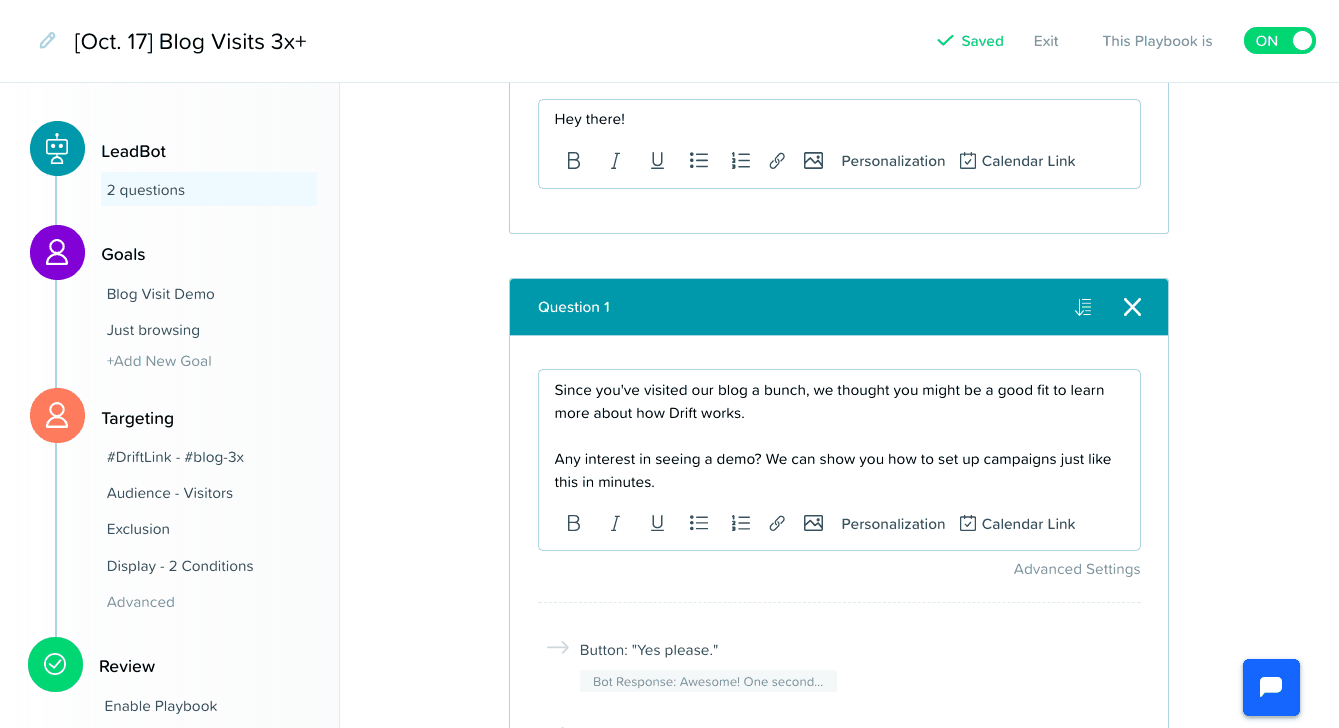
Finally, we set the targeting rules, making sure to exclude existing customers.
And while we decided to hone in on people who had visited our blog more than twice, you’re free to set your own targeting rules however you like.
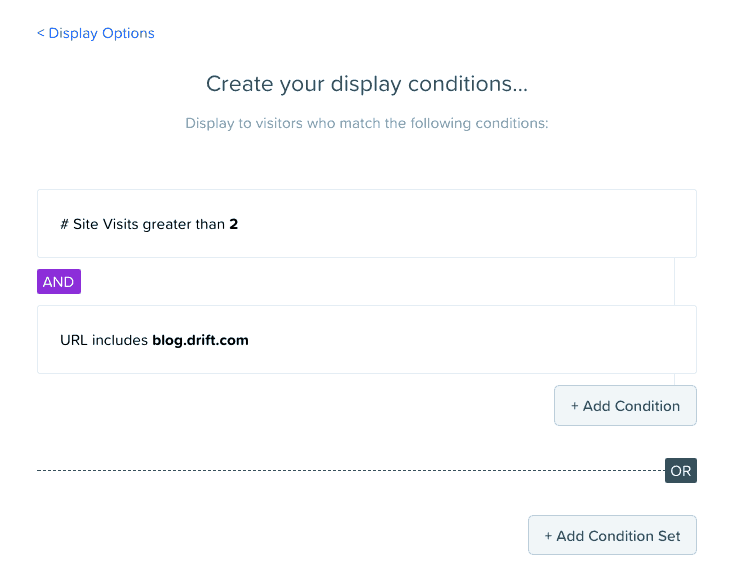
The general rule of thumb: If your blog gets a ton of traffic, be more restrictive with your targeting.
Not much blog traffic? Open the floodgates.
Step 3. Kick back, relax, and review your metrics.
That’s the best part: Watching the meetings roll in for your sales team.
For years, the marketing-to-sales handoff has been a pain for countless companies. But through taking a conversational approach, that hand-off can now happen automatically.
And unlike with old-school platforms, with Drift everything is based on what customers are actually saying — not on “events” or product behavior.
That’s how we ensure the leads we generate on our blog and pass to our sales team are high-quality. We use conversations to qualify them. (Something you can’t do with a form.)
It’s a better experience for buyers, and it’s also a better experience for sales and marketing teams.
Final Thought: Your Blog Is Just the Beginning
There are lots of other places on your website where you can be generating qualified leads with conversations.
At Drift, the “three visit” Playbook we run on our blog is just one of several Playbooks we have running around the clock.
Stay tuned: In a couple weeks, we’ll be spilling the beans on ALL of the key plays we’re running on the Drift website using Drift. Yes, it’s going to be very meta: Drift on Drift.
And just in case you’re interested in a demo (but haven’t visited our blog three times yet), feel free to click the link below. ?



